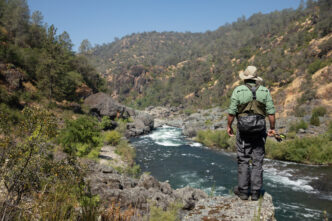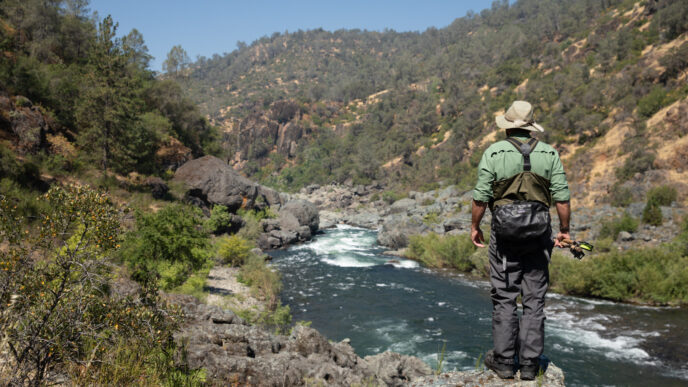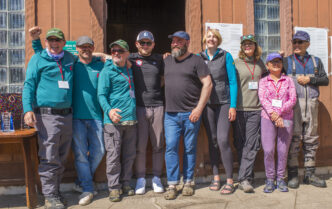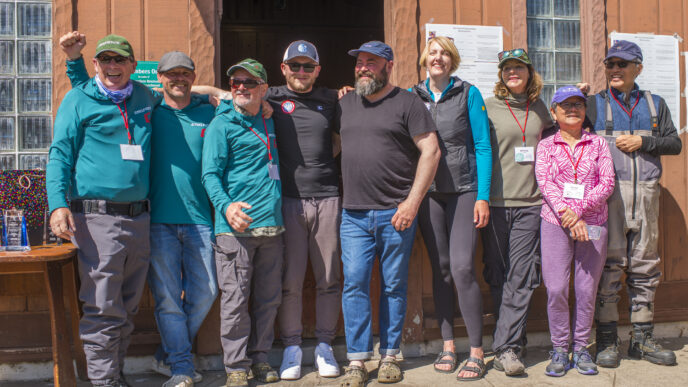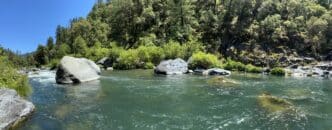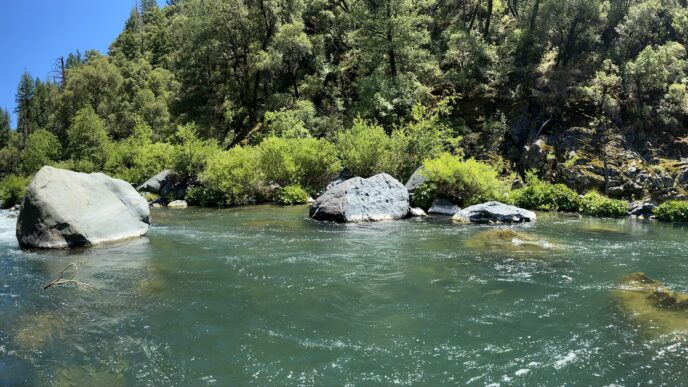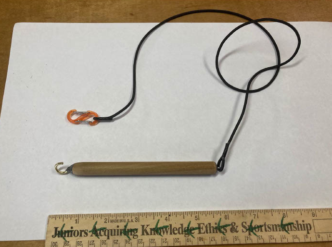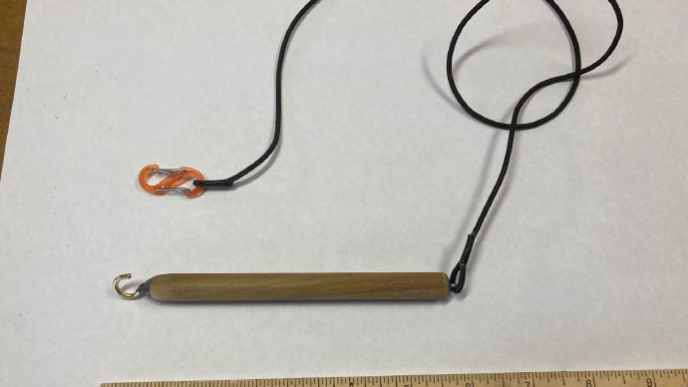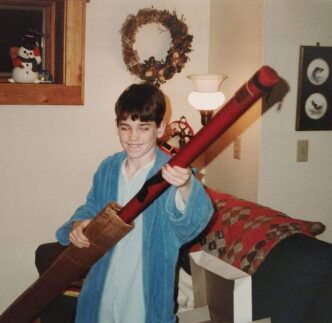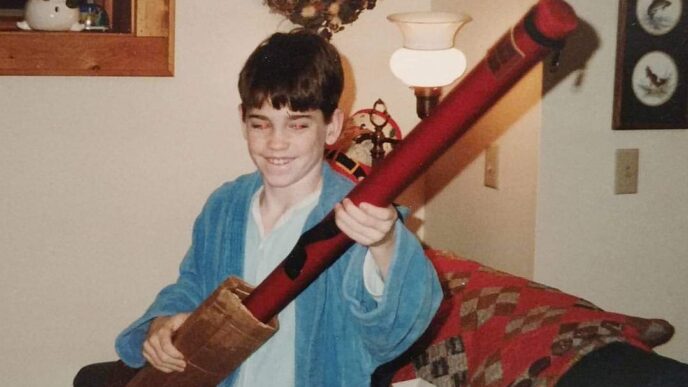The Complex Pyramid Lake
I enjoyed reading Bob Gaines’ insightful piece on Pyramid Lake as well as the excellent Guide Profile of Autumn Harry and Sam Sedillo’s piece on LCT recovery efforts. Each piece offers much to the general angler hoping to immerse themselves in the beauty and wonder that is Pyramid Lake.
The story of Pyramid Lake is complex, however, and a thoughtful angler would do well to dive deeper into its incredible and far-reaching history. Often, we like to settle for simplistic, reductive explanations when in fact, there is much more beneath the surface.
While Bob Gaines and Sam Sedillo are correct to identify the Bureau of Reclamation’s Derby Dam project as one of, if not the most, important factor in the demise of the cutthroat trout fishery at Pyramid and throughout the Truckee River system, it was not the only factor. Further, the story of government involvement does not end there, nor is it adequate to place sole blame at the feet of Theodore Roosevelt, Gifford Pinchot and other early conservationists whose myopic worldview had them worshipping at the altar of efficiency. Yes, it was they who envisioned the Nevada desert transformed into lush farmland but there were many other misguided contributors to the Lahontan’s demise.
Overfishing, water contamination at the hands of lumber and pulp companies as well as water diversions by power companies and Tahoe property owners all contributed to the eventual extinction of the Lahontan cutthroat trout. Derby Dam may have pushed the endangered trout over the edge, but it was the factors mentioned above that shepherded the trout to the cliff.
In the 1970s and 80s it was the U.S. Supreme Court, because of difficult and contentious legal efforts by determined Pyramid Lake Paiute members and their lawyers, who finally acknowledged that Pyramid Lake’s original inhabitants had a right to more water. Ironically, it was the endangered Cui-Ui that they were trying to save; as a result, the cutthroat was also resurrected.
Likewise, without the federal government’s efforts in building water storage projects on Prosser Creek, Donner Lake, Lake Tahoe and on the Little Truckee River, Pyramid Lake would not have enough water to sustain the amazing fishery that it has become—nor would those streams be the wonderful fisheries that they are today. Today, the CDFW, Bureau of Reclamation, and California and Nevada continue efforts to promote cutthroat spawning habitat in the Truckee River.
I, too, first learned the amazing story of Pyramid Lake from Ralph Cutter and his book Sierra Trout Guide. But, Cutter’s explanation was only the tip of the iceberg, and through much research, I have learned so much more about the complex, multi-faceted history of Pyramid Lake and its scaly denizens. For instance, an early conservation movement emerged in Reno around the turn of the century that sought to save the fishery at Pyramid Lake. Although they failed, a network of prominent outdoor recreation enthusiasts gave life to a community that eventually partnered with a diverse group of Pyramid Lake and Truckee River stakeholders to protect the rare and valuable resource.
I encourage other anglers to do the same and dive into the rich tapestry of the past; our waters often have incredibly fascinating histories that are worth knowing. Bob Gaines’ article is a good starting point and Autumn Harry’s profile is an excellent addition to the rich canon of literature on Pyramid Lake.
Greg Robinson
Auburn, CA
NDOW and Pyramid Lake
I would like to commend you and your staff for continuing the California Fly Fisher. The strength of your content and the new format is exceptional. Your Winter 2025 issue covering many aspects of the Pyramid Lake fishery was full of fresh material on this ever-changing trophy water. Bob Gaines’ feature on the history of the lake was well-researched and well-written. However, as a lifelong fisheries biologist working on Lahontan cutthroat waters in Nevada, I must take exception to some of his historical points.
History, when misrepresented and repeated often enough, can overshadow the truth. Bob’s article does not acknowledge the critical role the Nevada Department of Wildlife (NDOW) played in reviving the Pyramid Lake fishery.
The demise of the fishery is well documented. The commercial harvest of Lahontan cutthroat removed tons of these fish from mainly Pyramid Lake but also Lake Tahoe and Walker Lake. These fish found ready markets during the peak of the Comstock days and via railroads after the construction of the Union Pacific. Between 1873 and 1922, an average of 100,000 fish per year were shipped from Wadsworth and Verdi.
The Verdi Hatchery, built in 1909, was the first hatchery in Western Nevada and was operated by the state. Cutthroat trout running up the Truckee River were collected for spawning in February and March by state and federal biologists. These eggs, incubated at the Verdi hatchery, were distributed throughout Nevada. NDOW records indicate that between 1905 and 1925, 11.5 million cutthroat trout were distributed to the 17 different counties in Nevada—including in Pilot Peak, which would later prove significant in restoring the species.
The diversion of water from the Truckee River via the Derby Dam, beginning in 1905, undoubtedly was the demise of the Pyramid Lake fishery. In 1929, the Nevada Fish and Game Commission (NFGC) took 3,000,000 eggs from Pyramid Lake and noted this year as the last year of any significant run up the Truckee. By 1941, the cutthroat trout fishery was gone in the lower river. By the mid-1940s, both sportsman and Tribal members believed the fishery was gone forever and the lake too saline to support trout.
In 1946, Tom Trelease, Nevada’s first field fisheries biologist, began a biological study of Pyramid Lake. In August 1948, Tom worked with Ira La Rivers and Benjamin Banta of the University of Nevada Reno to place live cages in Pyramid Lake and test the survival of cutthroat trout of varying sizes. Trelease’s study proved that cutthroat trout could still survive in Pyramid Lake’s waters. He secured the Tribe’s permission to restock the lake, leading to a formal agreement on November 12, 1948, in which the state committed to providing cutthroat trout “to the best of their ability.”
NDOW struggled for years to obtain sufficient stock for rearing enough cutthroat trout to meet Pyramid Lake’s needs. Tom attended meetings with the Summit Lake Tribe to spawn fish from their lake. Heenan Lake cutthroat were used for brood stock, along with native Lahontan cutthroat trout from Walker Lake.
In 1950, a third agreement between the Tribe and the state allowed non-Tribal anglers to fish Pyramid Lake with a Tribal permit. The program gained momentum, and by 1960, Verdi Hatchery’s entire production was dedicated to Pyramid Lake. Through 1974, NFGC—later NDOW—remained the primary provider of Lahontan cutthroat trout, with additional contributions from the U.S. Fish and Wildlife Service.
For over 20 years, Nevada’s fisheries managers—through full-time biologists and hatchery production—were instrumental in restoring the Pyramid Lake fishery. Their contributions should not be overlooked in the historical record.
Mike Sevon
Retired NDOW fisheries biologist
Verdi, NV
FROM THE EDITOR
Thank you for sharing these valuable insights and expanding on NFGC’s role in restoring Lahontan cutthroat trout.
Bob Gaines, the article’s author, was working within a set word limit, and with the focus on fly-fishing, space to delve deeply into the initial re-establishment of cutthroat in Pyramid Lake was limited. Your account helps fill in that important historical context.
As you detail, NFGC certainly played a key role in the cutthroat’s return, alongside contributions from Tribal, Federal, and State agencies. While NFGC’s annual stocking of at least 5,000 pounds of fish was significant, the Tribe’s efforts were equally crucial—eventually stocking 600,000 to one million Summit strain fish per year from their own hatcheries. This dedication undoubtedly helped restore Pyramid Lake as a world-class fishery.
Your accurate recounting of this history adds an essential piece to the larger story of the lake’s resurgence and the Tribe’s contributions—the introduction of the Summit strain, the miraculous return of the Pilot Peak strain, and eventual diminishment of the Summit strain.
The miracle discovery of the Pilot Peak fish is a rare success story in fisheries management at a time when so many fisheries are sadly declining.








